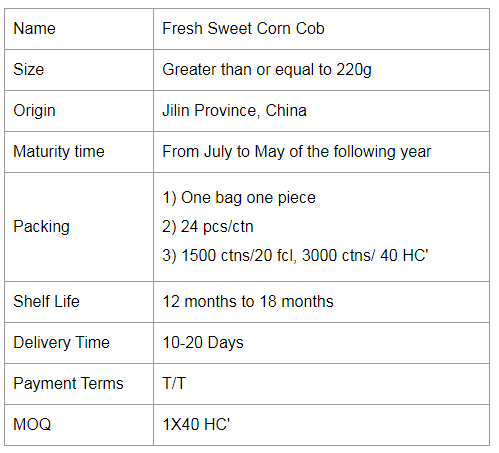First, the election site preparation (I) Selection Potatoes are crops that are not resistant to continuous cropping, and potato and corn, wheat, beans, and other plants have a good yield increase effect. Potato tuber enlargement requires loose fertile soil. Therefore, the plots for planting potatoes are best selected from flats with a flat topography, deep plowing layer, medium and high fertility, good soil physical and chemical properties, and strong water retention and fertility, and slopes below 15 degrees. (b) Land preparation After the harvest of the former crop, deep plowing 30 centimeters, plowing the soil preparation, do deep, loose, flat, net, non-pull pull, shallow tillage before sowing, soft and loose soil layer, create a mulching film Good soil conditions. Second, row fertilization ridging (a) row Use a wooden stick or wooden board to make a sizer with a pitch of 70cm and 40cm. First, draw a first large ridge and a small ridge 20cm from the ground, 40 ridges of small ridges, 70 ridges of large ridges, and size ridges. The total width of 110?. (b) Fertilization The potato forms a large number of stems and leaves and tubers during the growth period, and therefore, more nutrients are needed. Among the three elements of fertilizer, the demand for potassium is the most, followed by nitrogen and phosphorus. Basal fertilizer plays an important role in potato yield increase. The basal fertilizer of potatoes must account for 3/5 or 2/3 of the total fertilizer. Basal fertilizer mainly consists of fertilized heaps of manure and manure and livestock manure. Generally, there are 3,000 kg of fertiliser in Mushi and spread evenly on the surface before ridging. The applied fertilizer is applied in a shallow ditch with a depth of about 10? in the middle of a large ridge, and the application amount determined by each acre is generally 30~40kg for urea, 40~50kg for superphosphate, and 20kg for potassium sulfate per acre. (c) Rigging 1, ridging requirements Sichuan-Taiwan land is grooved and ridged along the direction of crop planting, and slopes are ridged along contour lines. Large ridges are 70 centimeters wide, 15 centimeters high, 40 centimeters wide, 10 centimeters high, and each ridge corresponds to one large and one small. A high and low two ridges. It is required that the ridges and ridges should be uniform in width and width, and the ridges should be of the same height. The width and width of the ridges are required to be uniform and the ridges are of the same height. Conditional mechanical ridging can be used to improve work efficiency and reduce labor intensity. 2, ridge method Use a step plough to back up the ridge along the scribe line, and then use a hand rake to form a large ridge with a base width of 70cm and a ridge height of 15?, and plowing the plow wall when the ridge is raised is hand-scraped to the small ridge. The ridges are 10 feet wide and 10 ridges high. Third, soil treatment, pest control weeding The first is the prevention and control of underground pests: When the land is ridged, the soil pests are seriously damaged. For each mu, 0.5 kg of methyl isotriphosmidate 0.5 kg and 15 kg of fine sand are used to spread the poisonous soil. The second is weeding under the membrane: after ridging, the surface is evenly sprayed with 50% acetochlor and then covered with a plastic film. The soil moisture is relatively high, the area with high temperature is 50-70g per mu, and the water is 30?, and the agent is 150-200g per mu in the cold area, and the water is 40-50?. In order to improve the efficacy, do not cover the field after spraying the entire field, generally two ridges spray, cover the film, and then spray two ridges. Fourth, film (I) Lamination time The mulching and coating time can be earlier, generally after the thawing in mid-March, or autumn in the previous year, but care should be taken to protect the mulch in the winter. (B) film coating method With a thickness of 0.008-0.01 mm and a width of 130-140 mm, a shallow trench about 5 cm deep is to be opened along the edge line. After the mulch is unrolled, one side of the margin is in the shallow trench, compacted with soil, and the other is between the ridges. About every 1 m along the mulch, the earth was taken from the underside of the film with a shovel and fixed in place, and the belt was pressed horizontally every 2 to 3 meters. After the first film is covered, one side of the second film is connected with the first film in the middle of the small ridges, compacted with the topsoil in the next furrow, and the complete field is sequentially pushed. When the film is covered, the film must be stretched and laid out. After the soil is taken from the ridge, it should be leveled. (III) Management afterwards After the completion of the field mulching, the protection and management work will be effectively carried out, and the trampling of livestock into the ground and the removal of membranes caused by strong winds will be strictly prohibited. Always check along the furrows one by one. Once you find damage, cover them with fine soil. A week or so after the film is covered, the mulch is close to the ridge or after the rainfall, holes are drilled every 50cm in the furrow so that the water in the furrow can seep into the soil in time. V. Seed Preparation (I) Selected seed potatoes Based on the selection of improved varieties, the potato shape is selected to be regular, with the typical characteristics of the variety, smooth and bright color of the potato skin, and 1 to 2 weights of healthy seed potatoes of moderate size. When selecting the seed potato, it is necessary to strictly remove the epidermis cracks, malformations, pointed heads, necrotic buds, raw lesions, or black rot tubers of the umbilicus. (b) Seed processing Before planting, it is required to perform germination and drying. Potatoes have a dormancy period of 50 to 60 days after harvest, and all germ-free potato species must be germinated. 1, scattered storage After the seed potatoes are bought back, the seed potatoes are spread evenly in the room where they are dry and ventilated. If some potato pieces are found to be rotten, remove the rotting portion. 2, cut the block 10 days before planting. The apical buds of the potato first germinate and have the effect of inhibiting germination of the buds in the middle and lower parts. If the top buds are damaged or removed, other buds will germinate quickly. In order to obtain more seed potatoes, it is necessary to cut the potatoes. The method is as follows: 2.5 Two or more large potato cuttings: cut transversely from the middle, the top part is divided into 2 to 4 pieces, each piece has 1 to 2 buds, and all have the top part connected. Umbilical cut 2 to 3 pieces. 2 about two cuts: horizontal knife, vertical knife, that is divided into four. 1 two small potatoes cut method: vertical knife, divided into two pieces. 41 two small potato cutting method: cut 0.6 to 0.8 cm at the top, do not completely cut. 3, diced disinfection After the potato slices are cut and sterilized with 0.2% carbendazim or chlorothalonil (100 pounds of water plus 2 two drugs) liquid spray, spray wet. It is also possible to coat the incision with ash. After drying, carry out sand bed germination. 4, sand bed priming In a dry, ventilated place indoors germination. Use a clean river sand as a germination bed in the cool and ventilated place. Place the cut potato block densely on the germination bed and cover it with 3 cm thick wet sand. Small tubers are densely laid on the river sand and covered with river sand. Such a layer of small potato block wet river sand (appropriate 2 to 3 layers is appropriate), after the shop covered with sacks or straw. After 6 to 8 days, when most of the potato shoots germinate buds (buds grow a peanut size) can be sown. Precipitate should always check the river sand moisture, too dry water spray in time, avoid the bottom of water. Ready-to-eat Single Packed Sweet Corn
The factory is located in Gongzhuling City which known as "Hometown of Corns in China", it is one of the top three golden corn belts in the world far away from pollution.
If you have any questions, please contact us directly. Welcome to visit our factory, if you have any questions, please email us directly.
Sweet Corn Cob Varieties,Sweetest Sweet Corn,Sweet Corn Maize,Sweetened Corn Cob Jilin Province Argricultural Sister-in-law Food Co., Ltd. , https://www.nscorn.com
Jilin Province, as the main corn producing region in China, is also in the main grain exporting province of the country. It has been the first in China in terms of total corn production and commercial grain rate. There has the mosst excellent soil and climate which are suitaable for corn growth. The corns there have high yield and excellent quality, are ideal raw materials for processing fresh sweet and waxy corn.Corn planting in the Northeast region is mostly one crop a year, and spring sowing is mainly based on clearing, which accounts for more than 50% of the corn planting area in the Northeast.
In addition to clearing, the importance of corn in crop rotation cannot be ignored. Rotate crops with sorghum, millet, soybeans and other crops to improve crop yields.
Affected by climatic characteristics, the choice of corn varieties in Northeast China is to choose varieties with moderate maturity or early maturity, and at the same time have the characteristics of low temperature tolerance and high yield.



Potato drought-resistant cultivation techniques
Next Article
CFDA is not registered for 17 products